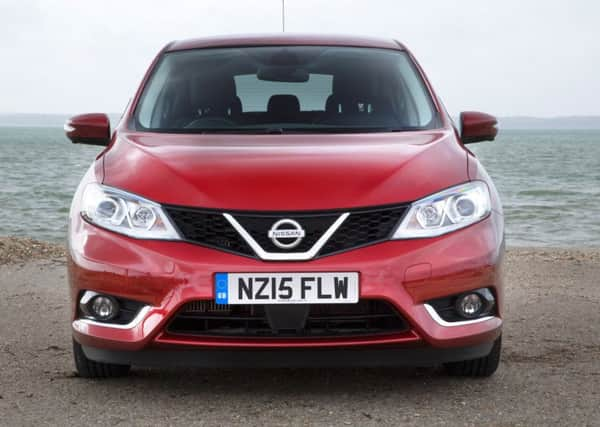Nissan Pulsar does a star turn


Although not officially an SUV, it’s a bit longer and taller than many others in the class, and Nissan hopes it will appeal to downsizers from large family saloons as well as to those who need a bit of extra space than so-called ‘B segment’ cars can provide.
Pulsar has been designed to satisfy European drivers and to cope with European roads, and is built at Nissan’s Barcelona factory.
Advertisement
Hide AdAdvertisement
Hide AdDesigned along the same lines as Qashqai and X-Trail, Pulsar is instantly recognisable as a Nissan thanks to the trademark front grille and sloping headlamps, and chunky, though curvaceous, profile.
The high driving position gives good all-round visibility and all seats offer a decent amount of leg, head and elbow room – even with a full complement of five adults.
The large, practical boot holds 385 litres with a wide opening and, once the seats are folded flat, this expands to 1,395 litres.
Interestingly, Nissan claim that the Pulsar has the widest armrests in the sector. It may be a minor consideration but it’s often the little things which elevate one model over another in a crowded marketplace.
We tested the 1.2 DIG-T 114bhp petrol model in Tekna trim, mated to a six-speed manual gearbox. Specifically tuned for the Pulsar, it has a posted 0–60mph time of 10.7 seconds and fuel economy of 56.5mpg; while CO2 emissions are 117 g/km.
I must say though, I was a little underwhelmed by its performance as it struggled sometimes to cope with even minor hills in anything but the lowest gears.
Tekna is the top trim of the four available and has a clutch of innovations designed for safety, security and comfort.
All models come with air conditioning, five-inch Advanced Drive-Assist Display and electric windows, tyre pressure monitoring system, six airbags and a stop and start system to save on fuel.
Advertisement
Hide AdAdvertisement
Hide AdTekna comes with DAB digital radio and moving object detection which alerts the driver, for example, if someone is walking towards the reversing car. There’s also lane departure warning, blind spot warning and – what I particularly like – a self-cleaning rear camera. The ‘wash and blow dry’ system detects when dirt is obscuring the lens, and sends a jet of water to wash it off, followed by a blast of compressed air.
Price for the Tekna we had on test is £20,345, with the range starting at 15,995 for the Visia.